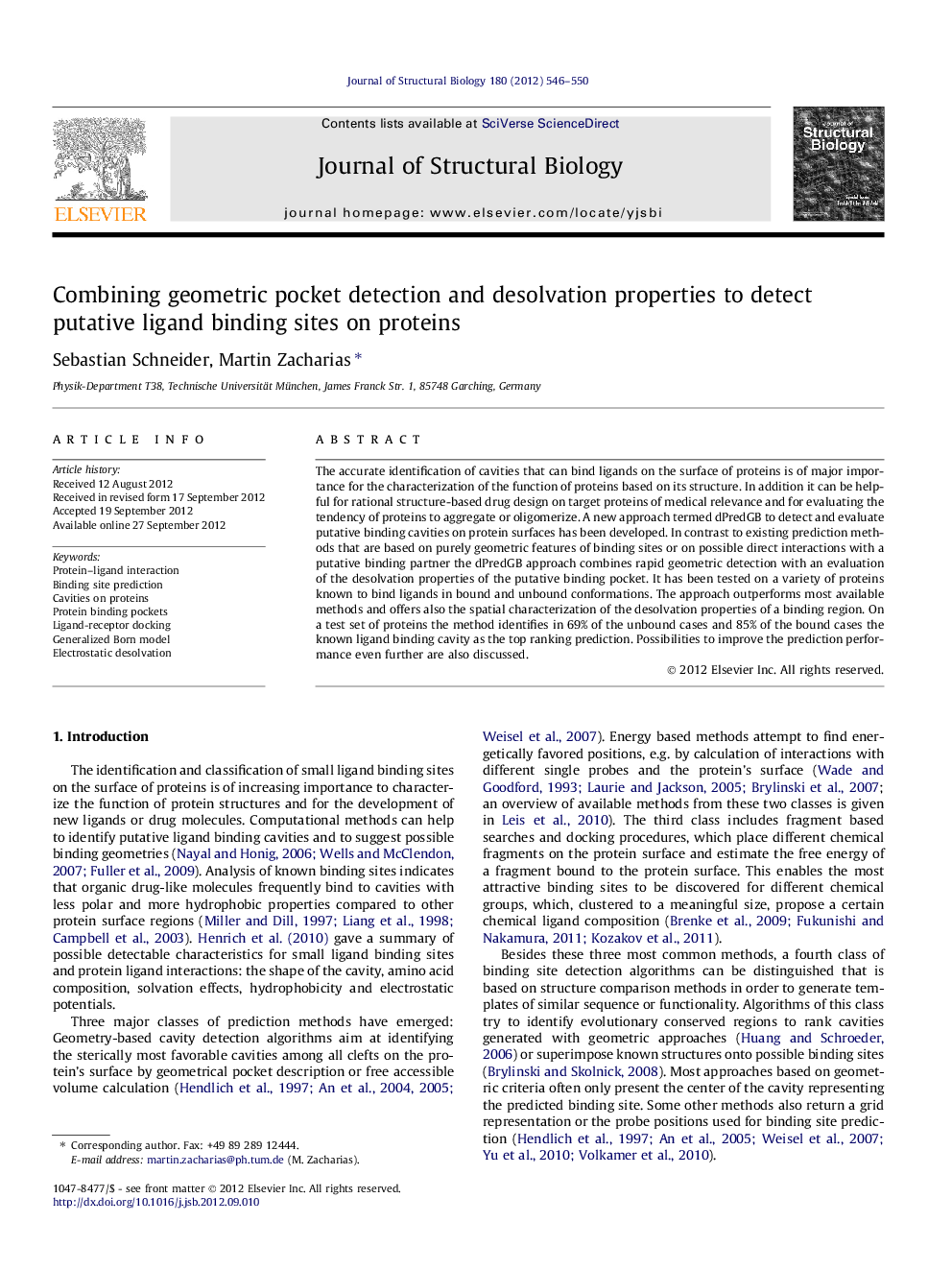| Article ID | Journal | Published Year | Pages | File Type |
|---|---|---|---|---|
| 5914409 | Journal of Structural Biology | 2012 | 5 Pages |
Abstract
The accurate identification of cavities that can bind ligands on the surface of proteins is of major importance for the characterization of the function of proteins based on its structure. In addition it can be helpful for rational structure-based drug design on target proteins of medical relevance and for evaluating the tendency of proteins to aggregate or oligomerize. A new approach termed dPredGB to detect and evaluate putative binding cavities on protein surfaces has been developed. In contrast to existing prediction methods that are based on purely geometric features of binding sites or on possible direct interactions with a putative binding partner the dPredGB approach combines rapid geometric detection with an evaluation of the desolvation properties of the putative binding pocket. It has been tested on a variety of proteins known to bind ligands in bound and unbound conformations. The approach outperforms most available methods and offers also the spatial characterization of the desolvation properties of a binding region. On a test set of proteins the method identifies in 69% of the unbound cases and 85% of the bound cases the known ligand binding cavity as the top ranking prediction. Possibilities to improve the prediction performance even further are also discussed.
Related Topics
Life Sciences
Biochemistry, Genetics and Molecular Biology
Molecular Biology
Authors
Sebastian Schneider, Martin Zacharias,
